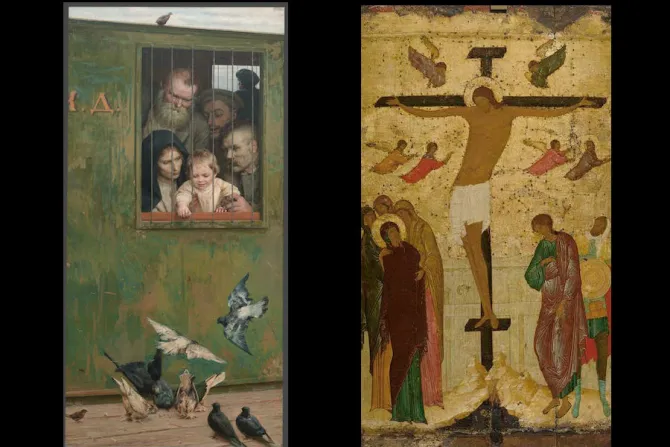Vatican City, Nov 20, 2018 / 10:05 am
"Art, spirituality, beauty," are the three words Vatican Museums director Barbara Jatta used to describe a visiting exhibition of 54 Russian icons and masterpieces, which opened at the Vatican Tuesday.
The exhibit, which has no cost to visit, is called a "Pilgrimage of Russian Art: From Dionysius to Malevich" and will be on display in the Vatican's Braccio di Carlo Magno Museum, the entrance to which is in St. Peter's Square, until Feb. 16, 2019.
The paintings and icons, many of which have never before been exhibited outside their home gallery, were brought to the Vatican following a successful visit of Vatican Museum masterpieces – including works by Raffaello and Caravaggio – to Moscow's Tretyakov Gallery in 2016.
Jatta told journalists Nov. 19 that part of the idea of an exhibit "on Russian spirituality, the Russian soul," is that beauty can build bridges between cultures, places, and religions.
The 54 pieces, spanning the 15th to 19th centuries, include works such as Dionyius' 16th-century icon, "The Crucifixion," Vasily Perov's 1872 "Portrait of the Author Feodor Dostoyevsky," and Kasimir Malevich's 1929 version of "The Black Square."
A goal of the show, according to its Russian curators, is to "present the cultural and spiritual message of Russian art in the heart of the Western Christian world."
The works are not presented in chronological order, but in a loosely thematic way, to show how Russian art, though different in style over the centuries, was and continues to be influenced by the same cultural and spiritual principles, according to Zelfira Tregulova, director of the Tretyakov Gallery.
For example, a 15th-century icon of the Blessed Virgin Mary holding the Child Jesus, called "Theotokos Kikkotissa," is hung beside Nikolay Yaroshenko's 19th-century painting, "Life is Everywhere," which also depicts a mother and child.
In "Life is Everywhere," a train car of convicted criminals is waiting to be transported to exile in Siberia; among them, a woman is holding her child, who is reaching out the barred window to feed breadcrumbs to birds outside.
Tregulova wrote in her introduction to the show's 266-page catalogue that the exhibit demonstrates the "deep, inner relationship between icon painting and Russian realism of the 19th century."
Icon painting was a living art in the 19th and 20th centuries in Russia, and a familiar part of life for every Russian, she explained.
"The masterpiece, in Russian understanding, should not just be a work of art of the highest quality, but a global utterance on a theme that is of universal importance," she wrote. "The mastery and quality of pictorial art are not negated, but they take second place to the spiritual value of the work."



